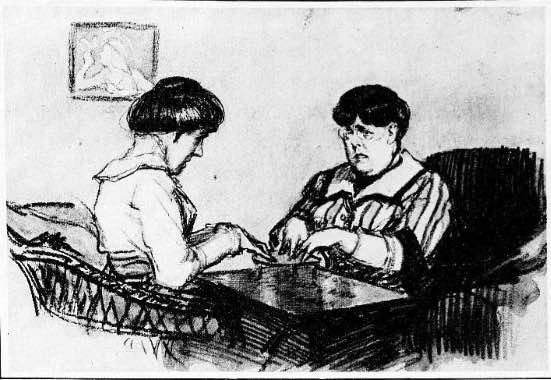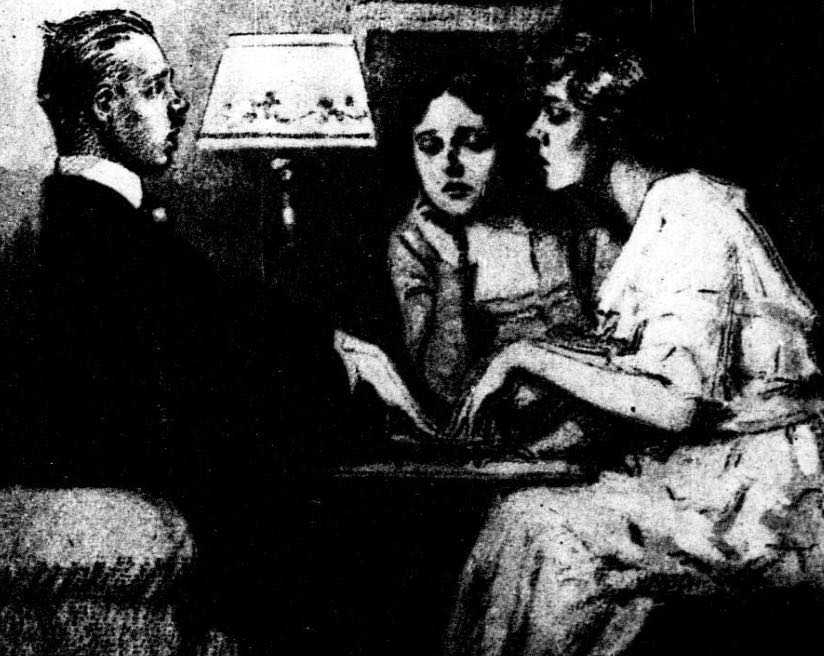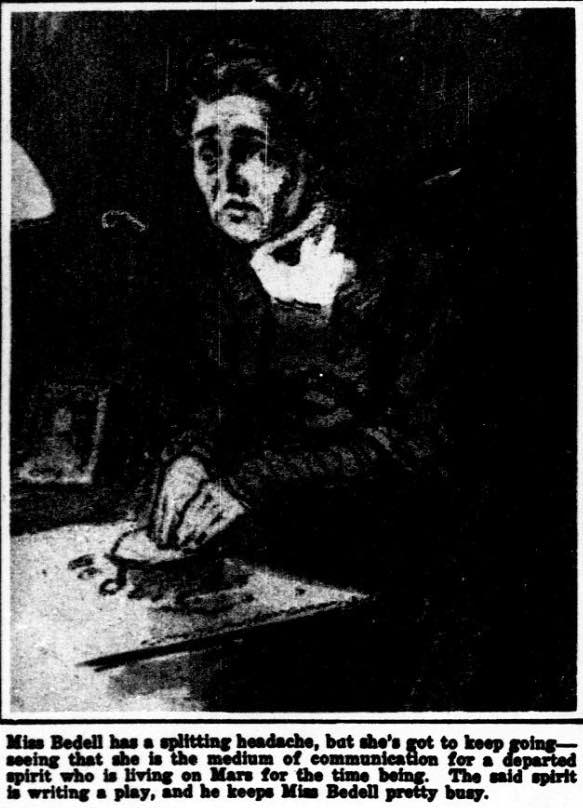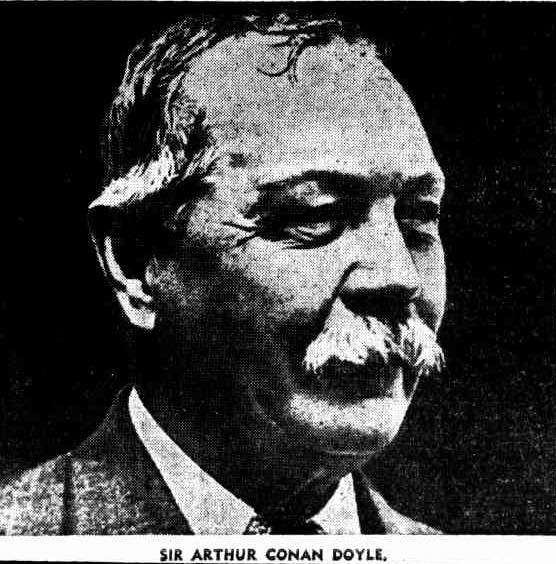
In popular culture today, Ouija boards are seen as evil tools that summon up destructive, murderous spirits. However, the Ouija board was originally developed as a children’s toy that was quickly taken up by the spiritualist movement of the early 1900s. The sensational stories that came from Ouija board use were often reported in newspapers and there was very little talk of murderous spirits until the 1970s, but the trickster “spirits” were extremely common.

Three Dead Bodies
Bertha Henry grabbed the phone and quickly called the police. “Send all the policemen to my house! Three persons have been murdered here!”
Sure enough, the Pittsburgh police and detectives arrived at Bertha’s house and she took them upstairs to a closed door. She pointed at it, shivered, and told them that it was in there.
The police entered the room and found it completely empty. When asked about the bodies, Bertha said that her Ouija board told her that three people had just been murdered in that room. To make sure she read the message right, she asked the Ouija to repeat the statement three times.
Bertha was arrested and a policeman was set outside her door to send away the other people she had called, such as the fire department, the Society for the Prevention of Cruelty to Children, and the Department of Justice. The year was 1920. [SOURCE 1]
Be Free To Marry
Thirteen-year-old Mattie of Arizona desperately wanted to get married to whomever she wanted. She even consulted her mother’s Ouija board in 1933 and it told her that she should kill her father so that she could be free to marry a “young cowboy.”
Mattie agreed and put a bullet in her father. Her dad survived the gunshot wound and was sent to the hospital. Mattie was arrested, pleaded guilty, and sent to reform school. [SOURCE 2]

Wartime Communication
In 1944, towards the end of WWII, a newspaper report claimed that Ouija board sales had skyrocketed. One department store in New York used to sell only a few of the boards each year until the first six months of 1944 when it sold over 50,000 of the boards.
What caused the sudden interest in Ouija boards? The war. Friends and family were buying the boards and using them as a means to either contact lost loved ones or to have the spirits check in on loved ones in the war. [SOURCE 3]
Told To Rob Bank
John Whitlock was having financial problems and decided to consult the Ouija board. Of course, it told him to rob a bank. Whitlock packed a bag full of what was later deemed as useless equipment and went to the Bank of New South Wales in 1921. He snuck into the manager’s room, managed to remove a few bricks from the wall, and was caught.
At Whitlock’s trial, he confessed to following the orders of the Ouija board. The jury found him guilty, but insane. When the judge told the jury that he could not be both, the jury decided on guilty, but to be given mercy. [SOURCE 4]
A Brave New World
Among the many people who practiced or believed in the power of the Ouija board was Aldous Huxley, author of “Brave New World.” He, along with Gabriel Marcel and other “intellectual snobs,” spent time in southern France, studying the Ouija board and other methods of communicating with the dead.
It was a closed circle with no newcomers allowed. They were too busy receiving messages “from the other world which prove[s] conclusively… that there is evidence of life beyond the grave.” [SOURCE 5]
The Whole Town Is Insane
At one point there was a lot of debate as to whether people who practiced anything resembling the occult were mentally stable or not. The psychiatrists of the early 1900s seemed anxious to diagnose as many people insane as they possibly could. For example, a small town in California, 1920, was struck with “Ouija mania.” As a result, three women and a thirteen-year-old girl were diagnosed as being insane for using the board game. The rest of the town was also considered crazy and the twelve hundred residents were going to be mentally examined to see if they, too, should be sent to the asylum. [SOURCE 6]

What Is My Name?
Gordon Fawcett Hamby, known as the gentleman murderer, was also quite the joker on death row in Sing Sing, 1920. In fact, he made jokes right up until he was killed in the electric chair.
Hamby kept a Ouija board in his cell that he requested to be given to a lady friend. When the warden asked him what questions he put to the board, Hamby replied, “What is my real name? It’s so long since I have used it I have forgotten it myself.” Hamby claimed that the Ouija board would always reply, “I’ve forgotten it, too.” [SOURCE 7]
Caused An Unnatural Disturbance
A woman living on the outskirts of Sydney began using a Ouija board inside her home in 1975. Shortly thereafter, things supposedly started flying around inside the house. The case of house possession was investigated by an Anglican commission and was decided to be a true, occult occurrence.
The solution, according to the Anglicans, was to ban the sales of all tarot cards and Ouija boards in Australia. Furthermore, they believed that the government should ban the sale of “harmful” occult materials to minors. They also believed that “calling up the dead” with toy boards was necromancy and that the practice was becoming far too popular. [SOURCE 8]
Message From Teddy Roosevelt
Almost a year after former president Theodore Roosevelt passed away, a New Jersey medium claimed she was receiving messages from him through her Ouija board. The messages were supposedly some of the most important words ever given by Roosevelt.
He had much to say about the League of Nations, an international group that was formed after World War I to resolve international disputes. He also wanted the public to know that, “If America does not understand her obligation to other nations she really will be lost to the world.”
The medium sent some of Roosevelt’s messages to his family who, it was reported, never responded to the medium for more inquiry. [SOURCE 9]

Kept In Touch With Family
Before Sir Arthur Conan Doyle passed away in 1930, he believed that he would be able to communicate with his family from beyond the veil. His family also believed it because, in 1954, an article was published about how the Conan Doyle family was keeping in touch with Sir Arthur.
Sir Arthur’s younger son, Adrian, reported that he and his family mostly spoke with Sir Arthur by Ouija board and sometimes Sir Arthur would send messages through mediums. The family gathered a lot of “scientific” evidence that the communications were real and defied any normal explanations.
According to Adrian Conan Doyle, Sir Arthur was busy on the other side. Things were solid there, just as they are here, and the living seemed as ghosts to the deceased. [SOURCE 10]

